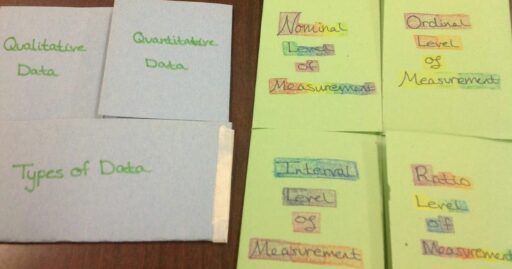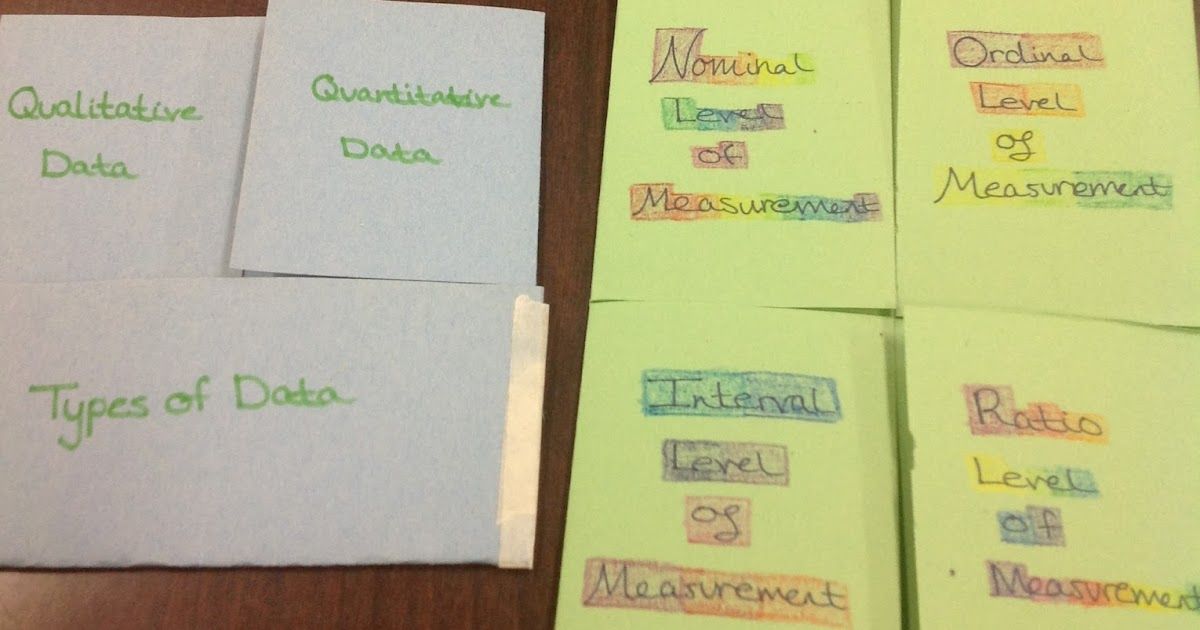Table of Contents
In the realm of research, data is the cornerstone of discovery and understanding. Qualitative and quantitative data serve as the two primary types of information that researchers collect and analyze to draw conclusions. While both types are crucial, they are inherently different in their approach, analysis, and application. This article delves into the nuances of qualitative versus quantitative data, their respective methodologies, and how they are applied across various fields to enrich our understanding of the world.
Key Takeaways
- Qualitative data focuses on descriptive analysis and understanding the complexities of human behavior, while quantitative data involves numerical measurement and statistical inference.
- The choice between qualitative and quantitative research methods depends on the research objectives, with qualitative methods suited for exploratory purposes and quantitative for hypothesis testing.
- Data collection techniques vary greatly between the two, with qualitative research relying on interviews and observations, and quantitative research using structured instruments like surveys and experiments.
- In fields such as education, social sciences, and business, qualitative research helps to gain deep insights, whereas quantitative research is often used to validate hypotheses and quantify trends.
- Integrating qualitative and quantitative research methods can provide a more comprehensive view, leveraging the strengths of both to offer richer, more nuanced findings.
Fundamentals of Qualitative and Quantitative Data
Defining Qualitative and Quantitative Data
Qualitative and quantitative data are the two pillars of research, each with its unique attributes and purposes. Quantitative data is numerical, focusing on quantifying the problem by way of generating numerical data or data that can be transformed into usable statistics. It is often used to answer questions like "how many" and "how much". This type of data is structured and can be easily organized into charts or tables.
On the other hand, qualitative data is descriptive and is characterized by its ability to provide insights into the problem, helping to understand the underlying reasons, opinions, and motivations. It is typically text-based and can be gathered through interviews, observations, and open-ended questions.
The choice between qualitative and quantitative data often depends on the nature of the research question and the depth of understanding required.
Here is a simple table illustrating some common forms of quantitative data:
| Type | Description |
|---|---|
| Discrete Data | Countable, often in whole numbers |
| Continuous Data | Measurable, can take any value within a range |
Choosing the right type of data is crucial for the success of research, as it directly impacts the way findings are interpreted and communicated.
Characteristics of Data Types
Understanding the characteristics of qualitative and quantitative data is crucial for researchers to effectively collect, analyze, and interpret information. Qualitative data is rich in description and detail, capturing the qualities and characteristics of the subject being studied. It is often collected through methods such as interviews, observations, and open-ended questionnaires, providing a narrative that can reveal insights into behaviors, experiences, and social phenomena.
On the other hand, quantitative data is numerical and can be measured and quantified. This type of data lends itself to statistical analysis, allowing researchers to test hypotheses and make predictions. Quantitative data is typically structured and can be displayed in charts, graphs, and tables, making it easier to handle and interpret.
| Qualitative Data | Quantitative Data |
|---|---|
| Descriptive | Numerical |
| Narrative form | Structured format |
| Collected through interviews, observations | Collected through measurements, surveys |
Both types of data play pivotal roles in research, with qualitative data offering context and depth, while quantitative data provides the basis for statistical analysis and generalization.
Choosing the right type of data to collect often depends on the research question and the goals of the study. While qualitative data can provide a deeper understanding of a subject, quantitative data is essential for confirming patterns and establishing relationships between variables.
Role in Research and Analysis
In the realm of research and analysis, the role of data is foundational. Qualitative data enriches research by providing context, understanding, and depth, while quantitative data offers the precision and statistical power to confirm patterns and hypotheses. The choice between qualitative and quantitative data often hinges on the research question at hand.
The integration of data collection and analysis is crucial for the success of any research project. The right data not only drives the research but also determines its validity and applicability.
For example, in quantitative research, collaboration plays a significant role in enhancing outcomes. Diverse expertise converges through data management platforms, fostering a comprehensive analysis. Here’s a simplified view of the research process:
- Planning Research: Define the subject and identify data sources.
- Collecting Data: Gather all relevant and existing data.
- Processing and Analyzing Data: Verify and validate data, manage storage, and cite sources.
- Publishing and Sharing Data: Determine access and promote data post-publication.
Ultimately, whether employing qualitative or quantitative data, the goal is to construct a robust framework for inquiry that yields insightful, actionable conclusions.
Key Differences in Data Analysis Approaches

Objectives of Qualitative vs Quantitative Analysis
The objectives of qualitative and quantitative analysis are distinct yet complementary. Quantitative analysis aims to measure and quantify trends, relationships, or comparisons, often using statistical methods to test hypotheses and predict outcomes. It is concerned with questions of "how many" and "how much", seeking to generalize results from a sample to a population.
Qualitative analysis, on the other hand, strives to identify, explore, and understand complex mechanisms. It delves into non-numerical data such as concepts, thoughts, or experiences, utilizing methods like interviews or observations to develop rich descriptions and contextual understanding.
| Criteria | Quantitative Data Analysis | Qualitative Data Analysis |
|---|---|---|
| Objectives | Measure and quantify | Identify and understand |
| Focus | Testing relationships | Exploring mechanisms |
| Methods | Statistical techniques | Interviews, observations |
Both approaches play a pivotal role in research, with quantitative analysis providing the numerical backbone and qualitative analysis offering depth and insight into the data.
Techniques and Tools Used
In the realm of data analysis, the distinction between qualitative and quantitative approaches is marked by the techniques and tools employed. Qualitative analysis often utilizes methods such as individual interviews, focus groups, and thematic analysis to interpret language and behaviors. Tools like NVivo and Atlas.ti assist in coding and identifying patterns within unstructured data.
On the other hand, quantitative analysis involves analyzing data using statistical techniques. It focuses on numerical relationships, patterns, or trends and is supported by software such as SPSS, R, and SAS. Common methods include regression analysis, predictive analysis, and inferential analysis, which are essential for summarizing data and testing relationships between variables.
The choice of techniques and tools is crucial as it directly influences the insights and conclusions drawn from the data.
The following table outlines some of the top data analysis methods and their associated tools:
| Analysis Method | Tools Used |
|---|---|
| Exploratory Data Analysis | Databases, Spreadsheets |
| Descriptive Analysis | Statistical Software |
| Regression Analysis | SPSS, R, SAS |
| Predictive Analysis | PowerBI, Tableau |
| Inferential Analysis | Online Survey Platforms |
Each technique and tool is uniquely tailored to meet the specific needs of the research, ensuring that the data collected is analyzed in the most effective manner.
Interpreting Results from Different Data Types
Interpreting the results of qualitative and quantitative data requires distinct approaches and mindsets. Quantitative analysis often involves statistical methods to derive meaning from numbers, while qualitative analysis seeks to understand underlying themes and patterns through a more narrative approach.
For quantitative data, researchers may use a variety of statistical techniques to interpret their findings. A common method is descriptive statistics, which includes calculating measures such as means and percentages. Inferential statistics, on the other hand, allow researchers to make predictions or inferences about a larger population based on a sample. Here’s a simplified example of how descriptive statistics might be presented in a study:
| Age Group | Percentage |
|---|---|
| 18-24 | 25% |
| 25-34 | 35% |
| 35-44 | 20% |
| 45+ | 20% |
Qualitative data interpretation, however, often involves identifying themes, patterns, and stories within the data. This can include coding responses, categorizing information, and constructing narratives to provide a comprehensive understanding of the data.
It is crucial to select the appropriate analysis method based on the research question, the nature of the data, and the research design. The choice between using qualitative or quantitative analysis—or a combination of both—can significantly influence the conclusions drawn from the research.
Data Collection Methods: A Comparative View

Qualitative Data Gathering Techniques
Qualitative data gathering is inherently exploratory, designed to delve into the nuances of human experiences and perspectives. Primary data collection is a cornerstone of qualitative research, often involving direct engagement with participants. Techniques such as interviews, focus groups, and observations are pivotal in capturing the richness of qualitative data.
- Interviews: One-on-one conversations that provide in-depth insights.
- Focus groups: Group discussions that reveal collective viewpoints.
- Observations: Immersive engagement to understand behaviors and interactions.
- Document analysis: Examination of existing texts for thematic patterns.
The essence of qualitative data lies in its ability to provide context and depth, going beyond mere numbers to uncover the ‘why’ behind human behavior.
Selecting the right qualitative method hinges on the research question and the desired depth of understanding. For instance, ethnography immerses the researcher in the participants’ environment, while case studies focus on a detailed examination of a single instance or group. The analysis of qualitative data is a meticulous process, involving coding and thematic analysis to distill patterns and meanings from the collected information.
Quantitative Data Collection Instruments
Quantitative data collection is characterized by the use of structured instruments that facilitate the gathering of numerical data. Surveys, experiments, and structured observations are the primary tools employed in this approach, aiming to quantify phenomena and establish statistical relationships between variables.
Quantitative researchers rely on standardized measurement tools and predefined response options, which allow for systematic data collection from a large number of participants. This method is particularly effective for analyzing data statistically and efficiently. The table below outlines some common quantitative data collection instruments:
| Instrument | Description |
|---|---|
| Survey | A set of questions with fixed response options designed to gather specific information from respondents. |
| Experiment | A controlled study to test hypotheses by manipulating variables and measuring outcomes. |
| Structured Observation | Systematic recording of observable behaviors within a predefined framework. |
By using these instruments, researchers can ensure that the data collected is consistent and comparable across different study participants, which is crucial for valid and reliable statistical analysis.
Choosing the Right Method for Your Research
Selecting the appropriate method for data collection in research hinges on the goals of the study and the nature of the data required. Understanding the objectives and the context of the research is crucial in determining whether to employ qualitative or quantitative techniques, or a combination of both.
- For descriptive studies aiming to gather data on trends, surveys are a common quantitative tool.
- Correlational research may utilize statistical methods to examine relationships between variables.
- Causal-Comparative studies often compare groups to determine the effect of different variables.
- Experimental research typically involves controlled trials, such as testing a new drug’s efficacy.
The choice of method also depends on the specific type of quantitative research being conducted. Descriptive statistics summarize data, while inferential statistics make predictions about a population from a sample. Cross-tabulation explores relationships between categorical variables, and MaxDiff Analysis is used for preference ranking.
Ultimately, the decision should align with the research question, the data’s characteristics, and the desired outcomes. In market research, for instance, the methodological approach can significantly influence the insights gained and the applicability of the results.
Applications in Various Fields

Qualitative and Quantitative Research in Education
In the realm of education, both qualitative and quantitative research play pivotal roles. Quantitative research is often employed to quantify various aspects of education, such as student performance, teacher effectiveness, and the impact of educational interventions. This type of research relies heavily on statistical analysis and structured data collection instruments.
On the other hand, qualitative research in education seeks to understand the experiences and perspectives of students, educators, and stakeholders. It delves into the complexities of educational settings, employing methods like interviews, focus groups, and observations to gather rich, descriptive data.
The choice of research method in education should align with the research objectives, whether it’s to measure specific outcomes or to explore the nuances of educational phenomena.
For instance, when examining trends in data analyst salaries or the effectiveness of new teaching methods, quantitative approaches might be more suitable. Conversely, understanding the cultural dynamics within a classroom or the personal narratives of students would benefit from a qualitative lens.
Implications for Social Sciences
In the realm of social sciences, the interplay between qualitative and quantitative research is pivotal. Qualitative research, with its emphasis on understanding human behavior and societal trends, often employs methods such as in-depth interviews, focus groups, and ethnographic studies. These approaches allow for a nuanced exploration of complex social phenomena.
Quantitative research, on the other hand, seeks to quantify these phenomena, providing a statistical backbone to social theories. It utilizes tools like surveys and questionnaires to gather numerical data, which is then analyzed using statistical software such as SPSS, R, SAS, PowerBI, and Tableau. The aim is to produce objective, empirical data that can be measured and compared.
The integration of both qualitative and quantitative methods can lead to a more comprehensive understanding of social issues, enabling researchers to draw richer conclusions.
When choosing between these methodologies, researchers in social sciences must consider the nature of their inquiry, the research questions they aim to answer, and the resources at their disposal. The table below illustrates some of the common tools used in both qualitative and quantitative research within the social sciences:
| Research Type | Tools | Sample Considerations |
|---|---|---|
| Qualitative | NVivo, Dovetail, MaxQDA | Non-representative, smaller samples |
| Quantitative | SPSS, R, SAS | Larger, random samples for representativeness |
Utilization in Market Research and Business Analysis
In the realm of market research and business analysis, the interplay between qualitative and quantitative data is pivotal. Quantitative methods such as online surveys are frequently employed, particularly in B2C market research, to gauge consumer behavior and preferences. However, the exclusive reliance on quantitative approaches can lead to gaps in understanding the subtleties of consumer behavior.
Qualitative techniques, often underutilized, offer a rich context for interpreting numerical data. For instance, confronting consumers with a new product and observing their reactions can provide insights that purely numerical data cannot capture. This qualitative feedback is essential for comprehending non-verbal cues and the nuances of consumer sentiment.
The integration of qualitative and quantitative methods enriches the market research process, allowing for a more comprehensive analysis of market dynamics.
In B2B market research, the combination of these methods is equally important. Techniques such as cross-tabulation and descriptive statistics are used to analyze consumer behavior across demographics and calculate average sales revenue. The choice of method is dictated by the research question and the nature of the data at hand.
Integrating Qualitative and Quantitative Techniques

When to Use a Mixed Methods Approach
A mixed methods approach is most beneficial when researchers seek to gain a comprehensive understanding of a research problem. It is particularly useful when one type of data provides a context for the other, enhancing the overall interpretation of results. This approach can be applied in various scenarios:
- When the research question is complex and cannot be addressed by qualitative or quantitative data alone.
- To validate findings from one method with another, increasing the credibility of the results.
- In exploratory studies where initial qualitative findings guide subsequent quantitative research.
- When seeking to understand different perspectives, combining statistical trends with the depth of individual experiences.
A mixed methods approach allows for a more nuanced analysis, capturing the richness of human behavior that numbers alone may not fully convey.
Choosing the right methodological approach depends on the specific goals and context of the study. In market research, for instance, quantitative data might quantify consumer behavior, while qualitative insights could explain the ‘why’ behind these behaviors. The table below illustrates a simplified decision-making process for selecting a research approach:
| Research Focus | Quantitative Data | Qualitative Data | Mixed Methods |
|---|---|---|---|
| Consumer Behavior | Frequency of Purchase | Motivations for Purchase | Comprehensive Consumer Profile |
| Product Feedback | Satisfaction Ratings | Detailed User Experiences | Integrated Feedback Analysis |
| Market Trends | Statistical Forecasts | Emerging Themes | Holistic Market Understanding |
In conclusion, a mixed methods approach is not a compromise but a strategic choice to enrich research outcomes. It is the bridge between the measurable and the meaningful, providing a fuller picture than either method could offer alone.
Advantages of Combining Data Types
Integrating qualitative and quantitative data types offers a comprehensive approach to research, allowing for a more nuanced understanding of the subject matter. The synergy between the two can enhance the robustness of conclusions drawn from the research.
- Depth and Context: Qualitative data provides the context and depth behind numbers, giving meaning to the statistical evidence provided by quantitative data.
- Validation and Corroboration: Quantitative data can validate and corroborate findings from qualitative research, increasing the credibility of the results.
- Flexibility in Analysis: The combination allows researchers to explore different angles of a problem, adapting their methods as new insights emerge.
- Innovative Insights: Collaborative platforms and no-code integrations enable a fusion of data types, fostering innovative approaches and collective intelligence.
By leveraging both qualitative and quantitative data, researchers can balance the strengths and limitations of each, leading to more informed and actionable insights.
Case Studies and Examples
The integration of qualitative and quantitative techniques can be illustrated through various case studies that highlight the strengths of each approach. For instance, research writing and analysis often involve a combination of methodologies to provide a comprehensive understanding of the subject matter.
In-depth case studies typically begin with qualitative methods to explore complex phenomena and then incorporate quantitative methods to measure and analyze specific variables.
A notable example is the use of case reports in medical research. While these reports provide detailed observations of individual patients, they lack a control group, which limits their statistical validity. Conversely, case control studies compare patients with a particular outcome to control patients without it, offering insights into causation despite potential errors.
In the realm of business intelligence, companies like Secoda employ a mix of data management techniques to enhance self-service capabilities and support decision-making processes. The table below summarizes the use of mixed methods in different contexts:
| Context | Qualitative Aspect | Quantitative Aspect |
|---|---|---|
| Medical Research | Detailed patient observations | Statistical analysis of control groups |
| Business Intelligence | Data documentation and enablement | Metadata management and data onboarding |
By examining these case studies, researchers can appreciate the value of integrating qualitative and quantitative data to achieve more nuanced and actionable insights.
Conclusion
In summary, qualitative and quantitative data serve distinct yet complementary roles in research. Qualitative data, with its emphasis on descriptive and subjective information, provides depth and context to human behavior and social phenomena. Quantitative data, on the other hand, offers the precision and scalability of numerical analysis, allowing for the measurement and generalization of trends across populations. The choice between these two types of data depends on the research objectives: qualitative for exploratory, in-depth understanding, and quantitative for definitive, statistical validation. By recognizing the key differences and applications of each, researchers can select the most appropriate method to address their specific research questions, ultimately enriching the field of study with diverse insights and robust findings.
Frequently Asked Questions
What is the main difference between qualitative and quantitative research?
Qualitative research focuses on understanding human behavior and subjective experiences through methods like interviews and observations, while quantitative research aims to discover facts through measurable data and statistical analysis.
Can you quantify qualitative data?
Qualitative data is inherently non-numerical and descriptive, focusing on understanding concepts and experiences. However, it can sometimes be categorized and quantified for analysis through certain methods like content analysis.
What are common techniques used in qualitative data analysis?
Common techniques include thematic analysis, content analysis, narrative analysis, and grounded theory, which help interpret and understand the underlying meanings and patterns within qualitative data.
Why might a researcher choose a mixed methods approach?
A mixed methods approach combines qualitative and quantitative techniques to provide a more comprehensive understanding of research questions, leveraging the strengths of both types of data.
How do sampling methods differ between qualitative and quantitative research?
Quantitative research often uses random sampling to ensure statistical representativeness, while qualitative research may use purposive or convenience sampling to gather in-depth information from specific groups.
What role does statistical analysis play in quantitative research?
Statistical analysis is central to quantitative research; it allows researchers to quantify variables, test hypotheses, and generalize findings from a sample to a larger population.





